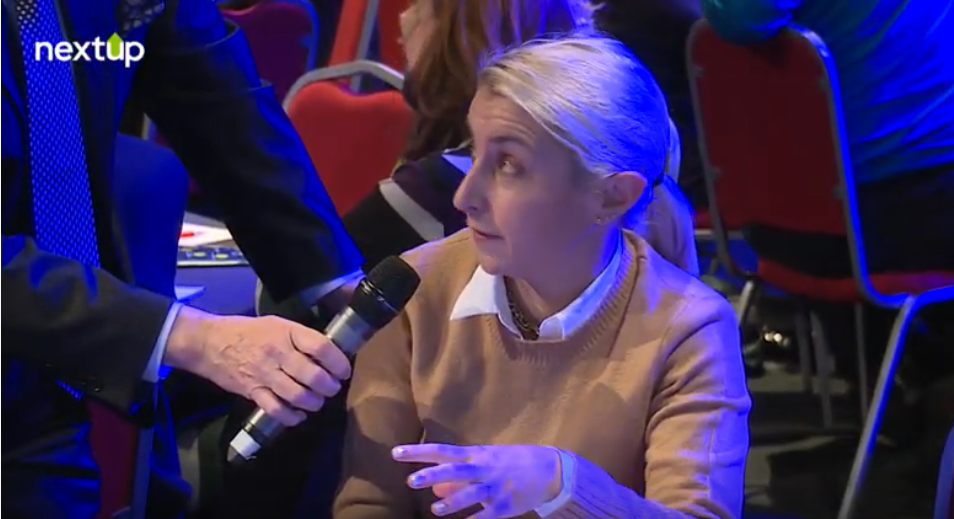A template to help partners who are retiring
20 September 2019 By Victoria Tomlinson

We have spent the last 18 months talking to, helping and working with dozens of professional firms and individual partners – mostly accountancy and law firms.
It is a time of real sea change. In the last month alone, three leaders of professional firms have said, “We don’t treat partners well on exit”, “Partners don’t have a great transition experience” and “We have to find a better process for the partner glide to retirement”.
The feeling is that partners have given their lives to their firms over 30 or so years and there is now a duty to help partners create a new stage of their lives.
So what is new about all this, what are the issues – and what should this help look like?
1. What has changed about retirement from a professional firm?
We currently have a perfect storm of change: partners are starting to retire as young as 50, but increasingly before they are 60; everyone is generally fitter and healthier than any generation before us; and we could easily be retired for longer than we worked. The 100-year life is no longer news.
In previous generations, partners typically retired at 65 and might take on a non-executive role at a client’s for a year or two and then call it a day. Or be happy to hit the golf course every day. Now there is a feeling that there has to be more than this – but what?
What is good, is that firms are waking up to the issue – and very quickly. And they are starting to put resources into this. Many see this as a thank you for the commitment to their firm, others that, with help, partners can become ambassadors for the firm – and others say it is just the right thing to do.
But what everyone is now working out is – what is the right thing to do?
2. What are the issues for partners coming up to retirement?
There is a great deal of sensitivity around a partner putting their hand up to say they are thinking about retirement. As soon as they go on a workshop to find out what is on offer, they are almost written off – by colleagues and clients.
Over the last few years, many firms have introduced support to help partners understand and position themselves for non-executive roles – if they are interested. Generally this is working with major headhunters.
I have come across a few firms who allow partners to start reducing the number of days they work before leaving – which seems to work really well. Quite a number also have arrangements to become consultants for the firm as a transition phase.
But for most, it is still a cliff edge. I keep hearing about partners working up to their last day with no headspace to start thinking or planning ahead. This can be for two reasons: they are in such a demanding role that the firm is keeping them fully occupied to the last minute; or the partners themselves can’t face up to their future and refuse to hand over clients or make plans for their exit.
Template for a good ‘exit’ for a partner in a professional firm?
There are now pockets of really good practice emerging in different firms. Having now seen such a wide variety – and adding in the things we have been doing – here is a template to help partners achieve a good ‘exit’.
1. Compulsory events at certain ages
I think all firms should make their support compulsory so no-one is dancing around the subject of when they retire and can start planning well ahead without people thinking they are leaving in few months. Even then this isn’t quite straightforward – there is rarely a neat, end date for any firm or partner.
However, I would suggest that what firms should do is
- Hold a half-day workshop at the age of 50 to start planning ahead and include financial planning in this. I keep hearing stories of partners not leaving because they aren’t sure they have enough money and, conversely, partners thinking they are better off than they are right up to months before they leave. You’d think professionals would be on top of all this, but surprisingly few are. This first workshop will also have inspiration as to ideas about what people can do next and a first stage of planning to start thinking and researching and testing ideas.
- There should also be further workshops at the age of 55 and, depending on typical retirement ages in the firm, also at 60. Each should increasingly build skills – such as networking and using LinkedIn strategically – and the plan should become more focused
- A number of firms offer coaching for the year ahead of leaving – but there are mixed reports about the usefulness of this. From talking to individual partners this works well if the coaches have considerable external experience. There are great stories of how this process can work – and some awful ones
2. Wide range of ideas beyond non-executive director roles
We are hearing more and more partners say they are really not sure they want a non-executive role – they aren’t sure it really uses their skills, the role itself is heavily governance-focused which appeals only to a few and the risks of a Carillion or Patisserie Valerie have really focused minds.
I have heard cynical comments from some partners, “They are putting all this NED support in place so we can continue introducing them to work. They have already sucked us dry and now they even want more from us in retirement.” I should say I haven’t come across any firms where this seems to be the agenda – but that is how many are perceiving it.
What partners really need is to hear a wide range of stories and examples of what others do at this stage. In the events we are organising for a number of firms, we bring in speakers – a mix of alumni and wider – talking about becoming a consultant, starting a business, being a mentor, angel investing, becoming a part-time FD, working with regulatory bodies, becoming a mediator and more. We also use clips from our peer stories and show people who have started a cookery school; growing flowers for wholesale; helping graduates get city jobs; published a novel; guest lecturing; writing for professional magazines – and more.
3. Remind partners of their skills
Spending time with so many partners in my office, I am constantly surprised at how many have very little confidence about their skills or what they have to offer. A few are very confident – dare I say, probably over-confident – but for most they have been institutionalised for 30 or so years and are not sure anyone will want them.
At our conference last year, we got this generation helping tech entrepreneurs and charities with issues/questions. It was brilliant! Have a look at this video to see what everyone got from this.

Firms need to find ways to bring these generations together – it really builds confidence, reminds everyone of their skills and builds new networks and ideas.
4. Build new skills
One of the hardest things for anyone leaving a firm is ‘you are on your own’. You need a new identity/personal brand that isn’t ‘I used to be ….’ And you have to market yourself without relying on the name of your old firm for your status.
LinkedIn is a critical tool for anyone who wants to do more than leisure activities. Most professionals have ignored it like the plague and even hate it, but once they understand how to use it strategically they can build new networks and use it as the lynchpin for their new life.
Giving them these skills will help them when they retire; but there is real value to the firm while they are still working. This blog on LinkedIn secrets highlights what partners get out of this – I shared tips from a session I did with my old firm, EY.
5. Create a real ‘transition’
Many firms talk about ‘transition to retirement’. But few really make this a transition.
I have spoken to a couple of partners where they started reducing their days in the last year or so – down to four days, three days and two before leaving and even then with the option to do some consultancy.
This seems to me the best way of finishing a long career. This gentle reduction means partners have to start handing over their clients – avoiding the story I heard of one partner virtually being locked in his office the day before he was retiring, to sort out a handover. He hadn’t even told his wife and was probably hoping he would be brought back as a consultant so nothing would change.
It gives the partner time to start building new networks, testing out markets and starting a new structure to their life. And unless they are going to do the Full Monty story (where a manager had been made redundant but continued to ‘go to work’ every day rather than tell his wife) it also means they will start having conversations with their families and adjusting to this new phase.
6. Coaching support for the final year
There is no doubt that transition to retirement is probably one of the hardest things that most partners will do. A few will wake up on the first day and be happy as Larry and have no problems. Of the rest, many will flounder and a few will struggle with mental and health issues. Someone said that a large percentage of partners who retire will die within two years. I can’t find the stats to back this up but I have seen numerous people in a really bad way after retirement.
Coaching is a luxury that many firms do afford – but many won’t be able to. I have come to the conclusion that if a firm can find good externally-focused coaches, this is a huge benefit to partners – and if possible, should be available for up to a year. The whole transition process takes time to work out and test out.
I have seen other good practices but I think the ones listed in this blog will have the most impact – and which a lot of firms are now starting to implement.
While for some firms this will all seem an expensive, nice-to-have luxury, I think there is a return for firms – covered in this piece on Why it pays for firms to motivate partners pre-retirement.
I would welcome views on this template for helping partners who are retiring – and to hear other examples of good practice to support people at this stage of life.


